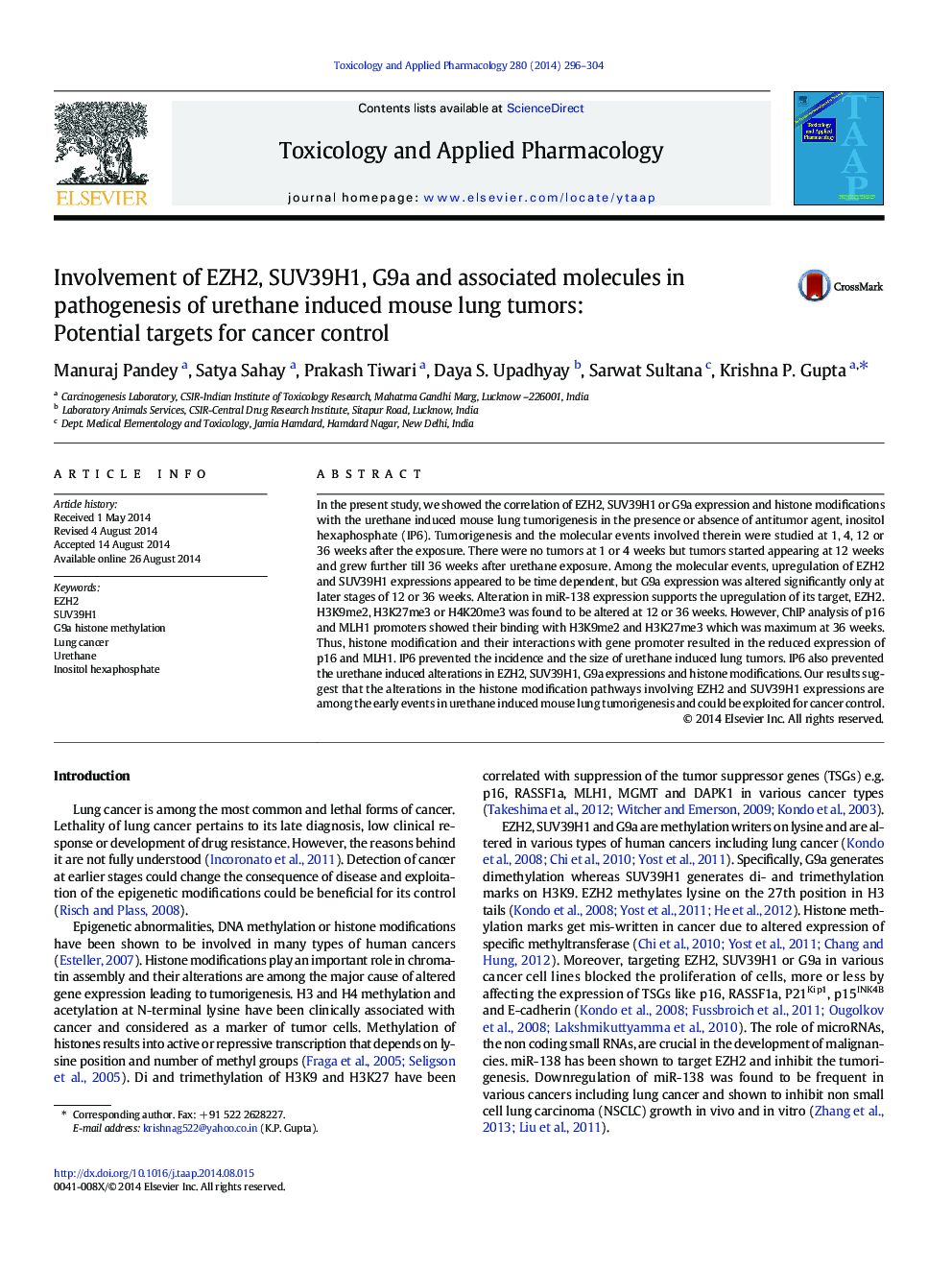| Article ID | Journal | Published Year | Pages | File Type |
|---|---|---|---|---|
| 5846231 | Toxicology and Applied Pharmacology | 2014 | 9 Pages |
Abstract
In the present study, we showed the correlation of EZH2, SUV39H1 or G9a expression and histone modifications with the urethane induced mouse lung tumorigenesis in the presence or absence of antitumor agent, inositol hexaphosphate (IP6). Tumorigenesis and the molecular events involved therein were studied at 1, 4, 12 or 36Â weeks after the exposure. There were no tumors at 1 or 4Â weeks but tumors started appearing at 12Â weeks and grew further till 36Â weeks after urethane exposure. Among the molecular events, upregulation of EZH2 and SUV39H1 expressions appeared to be time dependent, but G9a expression was altered significantly only at later stages of 12 or 36Â weeks. Alteration in miR-138 expression supports the upregulation of its target, EZH2. H3K9me2, H3K27me3 or H4K20me3 was found to be altered at 12 or 36Â weeks. However, ChIP analysis of p16 and MLH1 promoters showed their binding with H3K9me2 and H3K27me3 which was maximum at 36Â weeks. Thus, histone modification and their interactions with gene promoter resulted in the reduced expression of p16 and MLH1. IP6 prevented the incidence and the size of urethane induced lung tumors. IP6 also prevented the urethane induced alterations in EZH2, SUV39H1, G9a expressions and histone modifications. Our results suggest that the alterations in the histone modification pathways involving EZH2 and SUV39H1 expressions are among the early events in urethane induced mouse lung tumorigenesis and could be exploited for cancer control.
Related Topics
Life Sciences
Environmental Science
Health, Toxicology and Mutagenesis
Authors
Manuraj Pandey, Satya Sahay, Prakash Tiwari, Daya S. Upadhyay, Sarwat Sultana, Krishna P. Gupta,
